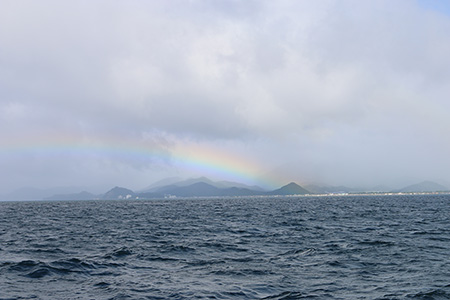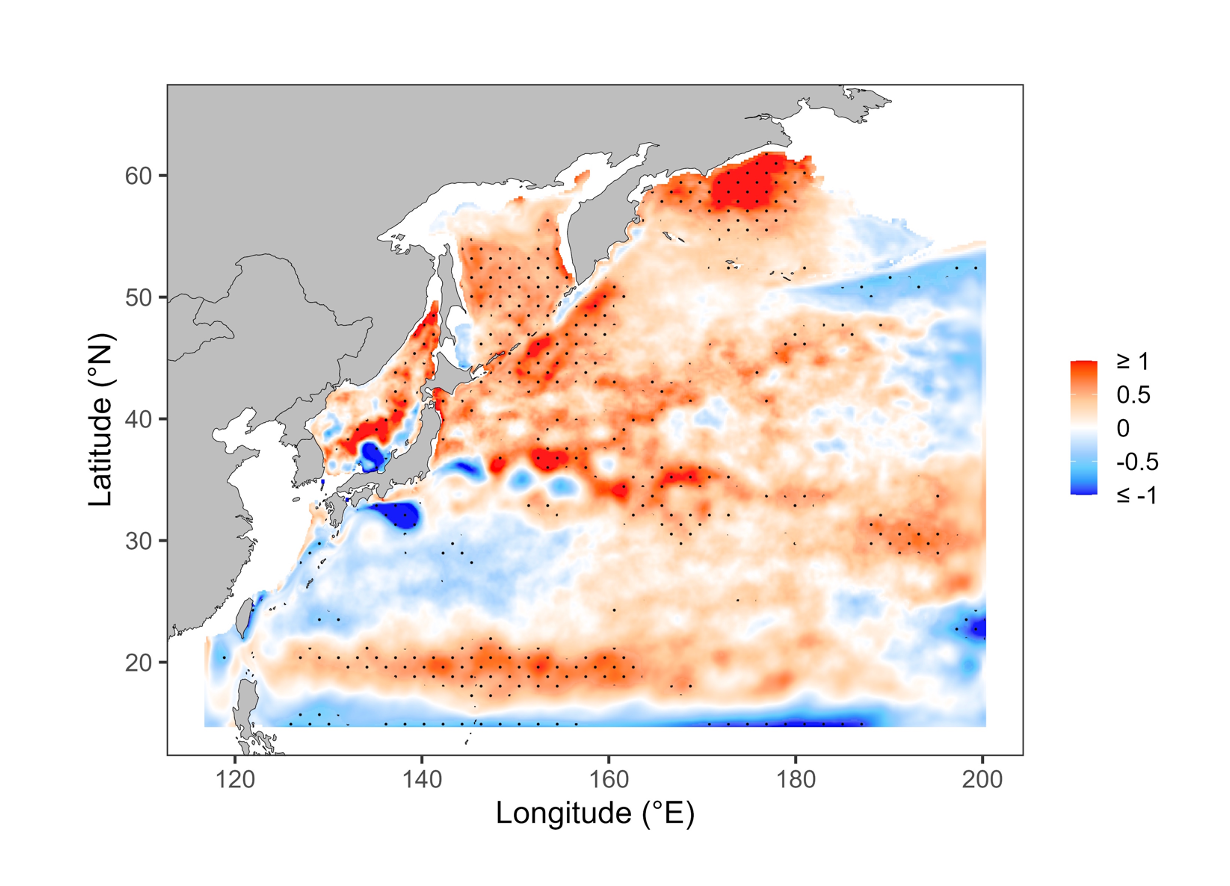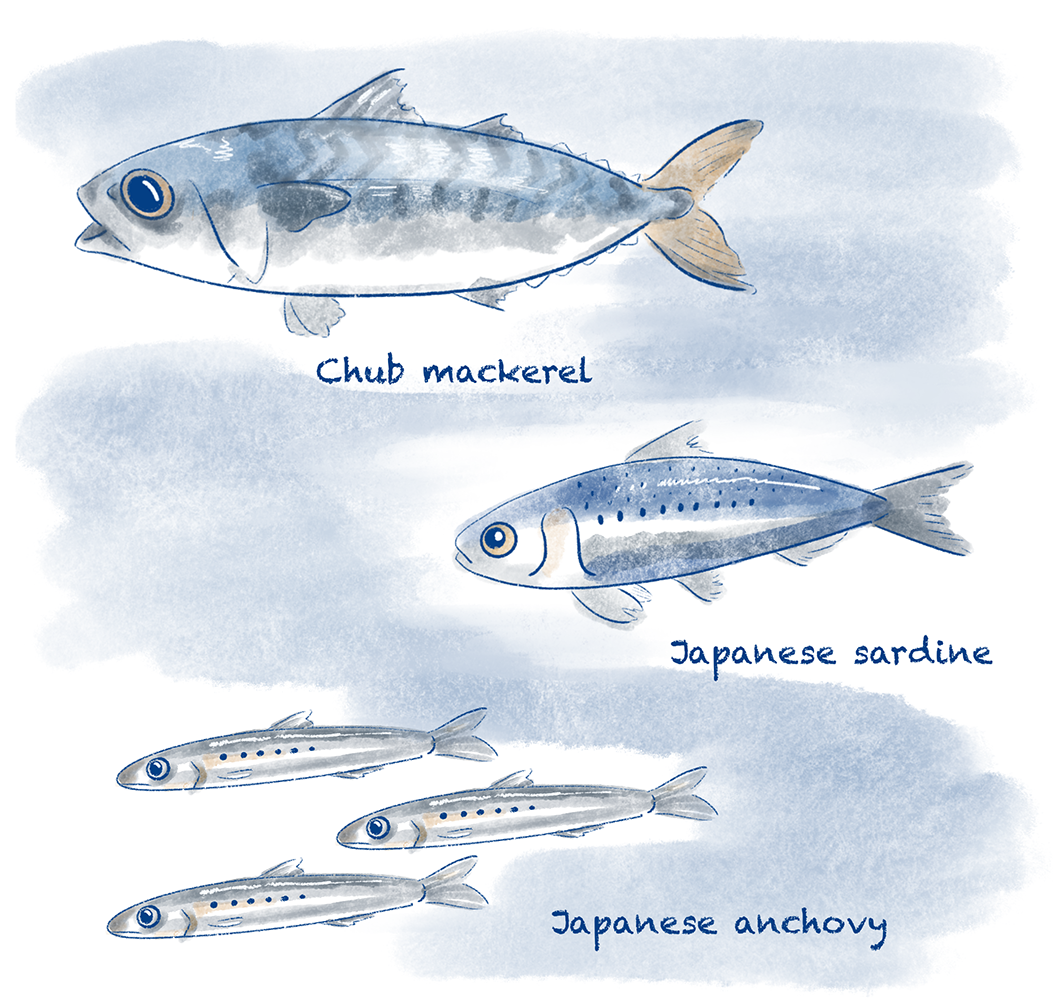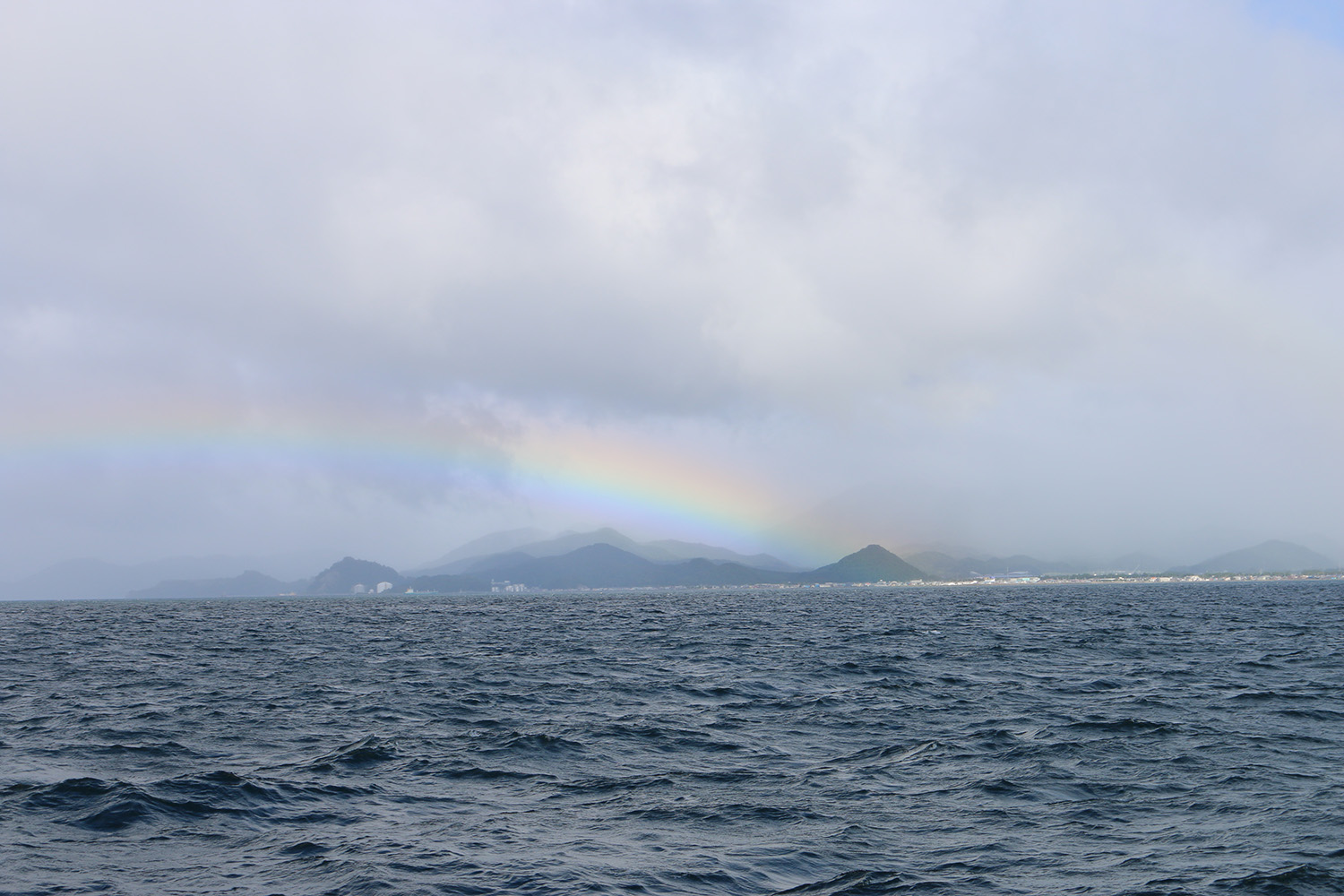Climate change shrinking fish Global warming increased competition for food in the 2010s, leading to decreased fish weight in important fishing area Research news


Warming Ocean. This image shows the mean vertical temperature difference at the 0.5- to 200-meter sublayers of the North Pacific Ocean, from 1982-1989 and 2007-2014. Red represents increased and dark blue decreased temperature differences (in degrees Celsius), with significant changes marked with black dots. © 2024 Zhen and Ito/Fish and Fisheries
Fish weight in the western North Pacific Ocean dipped in the 2010s due to warmer water limiting food supplies, according to a new study at the University of Tokyo. Researchers analyzed the individual weight and overall biomass of 13 species of fish. In the 1980s and 2010s, the fish were lighter. They attributed the first period of weight loss to greater numbers of Japanese sardine, which increased competition with other species for food. During the 2010s, while the number of Japanese sardine and chub mackerel moderately increased, the effect of climate change warming the ocean appears to have resulted in more competition for food, as cooler, nutrient-dense water could not easily rise to the surface. These results have implications for fisheries and policymakers trying to manage ocean resources under future climate change scenarios.
Whether it’s sushi, takoyaki (traditional octopus pancake balls) or grilled mackerel, seafood is an iconic and important part of Japanese cuisine. Japan’s seafood self-sufficiency has, however, been gradually declining for several decades. Local fisheries face multiple challenges from reduced sales and lower prices, labor shortages, changing consumer preferences and soaring costs. But perhaps one of the biggest threats comes from global warming.

Biomass variation. The graph on the left shows the change in biomass of the fish studied, i.e., the total weight of each species (unit: 1,000 tons). The graph on the right shows the relationship between the total biomass and individual weight. The red line shows the total biomass of sardine, mackerel and anchovy, while the black line shows the fluctuating and decreasing individual weight. ©2024 Zhen and Ito/Fish and Fisheries
Japan’s eastern coast is bordered by the western North Pacific Ocean, a highly productive marine area. According to the U.N. Food and Agriculture Organization, in 2019, the western North Pacific accounted for almost a quarter of the global total of fish caught and sold. However, results of new research at the University of Tokyo show that during the 1980s and 2010s, fish weight in the region changed dramatically.
“We investigated 17 fish stocks — that is, populations or groups of fish — from 13 species and found that many decreased in weight during this period,” explained Professor Shin-ichi Ito from the Atmosphere and Ocean Research Institute at the University of Tokyo.
Ito, along with co-author Lin Zhen, a PhD student, analyzed fish weight and biomass data from Japan’s Fisheries Agency and the Japan Fisheries Research and Education Agency. Fish weight refers to individual fish (for example, a 200-gram mackerel), whereas biomass is the total weight of a species or group in an area (for example, 50,000 tons of mackerel).

Important shoals. The Japanese anchovy, Japanese sardine and chub mackerel make up a large proportion of the important fishing stock in the area (as shown in the biomass variation graph). © 2024 Nicola Burghall
The pair looked at long-term data for six fish populations from four species between 1978 and 2018, and at medium-term data for 17 fish populations from 13 species from 1995/1997 to 2018. Seawater temperature data between 1982 and 2014 were also studied to see if changes in the ocean’s surface and subsurface layers may have had an impact.
The results showed two periods of reduced fish body weight, first in the 1980s and again in the 2010s. The team attributed the 1980s weight decline to an increase in Japanese sardine, which likely led to greater competition for food within and between fish species. By comparison, in the 2010s, although there was a moderate increase in the population of Japanese sardine and chub mackerel, the team’s analysis appeared to show that reduced nutrient supply to the ocean’s surface from subsurface layers, due to global warming’s effect on the ocean, was an influential factor.
“With higher temperatures, the ocean’s upper layer becomes more stratified, and previous research has shown that larger plankton are replaced with smaller plankton and less nutritious gelatinous species, such as jellyfish,” explained Ito. “Climate change can alter the timing and length of phytoplankton blooms (explosive growth of microscopic algae at the ocean’s surface), which may no longer align with key periods of the fish life cycle. The migration of fish has also been shown to be affected, in other studies, which in turn impacts fish interaction and competition for resources.”

Japan’s beautiful coastline. A view of Aomori Prefecture’s coastline, in northern Japan, where many species, including mackerel, sardine and cod, are fished. ©2024 Shin-ichi Ito
Ito hopes that fishery managers and policymakers will use research like this to better understand the changes taking place in the oceans around Japan to help make informed choices for the future. “Fish stocks should be managed differently than they were before, considering the increasing impact of climate-induced conditions. The situation fish experience is much more severe than decades ago,” he said. “If we cannot stop global warming, the quality of fish may decline. So, we need to take action so that we can enjoy a healthy ocean and delicious fish.”
Papers
Lin Zhen and Shin-ichi Ito, "Fish weight reduction in response to intra- and interspecies competition under climate change," Fish and Fisheries: February 28, 2024, doi:10.1111/faf.12818.
Link (Publication )
)





